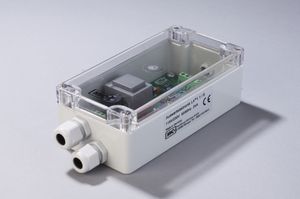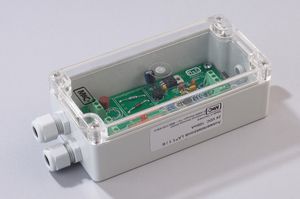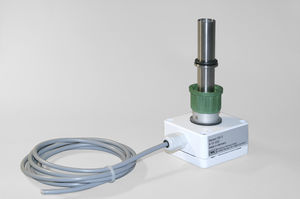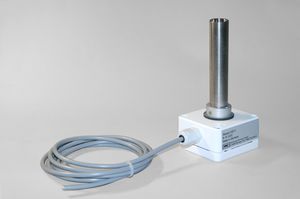
- Detection - Measurement
- Flow, Pressure and Level Measurements
- Capacitive level sensor
- M&C TechGroup Germany GmbH
Capacitive level sensor KS3for liquidsrugged

Add to favorites
Compare this product
Characteristics
- Technology
- capacitive
- Medium
- for liquids
- Other characteristics
- rugged
- Process pressure
2 bar
(29.01 psi)- Process temperature
Min.: -20 °C
(-4 °F)Max.: 50 °C
(122 °F)
Description
- Liquid sensor for conductive and non-conductive media
- Integrated preamplifier in robust aluminium sensor housing
- Connection: ø 16 mm with GL 25 union nut
- Operating pressure: max. 2 bar abs.
- With 1.5 m electrical connecting cable
- Material of sample-contacting parts: PTFE, stainless steel, Chemraz®
For non-conductive media. The new liquid alarm sensor type KS3 replaces the KS2. The KS3 is an adequate replacement for the KS2.Ex model. The former KS2 plastic enclosure has been replaced by a rugged aluminium case.
Liquid alarm sensors are used in gas sample conditioning systems for monitoring gas cooling and condensate drain-off devices in order to provide protection for downstream analysis instruments. The monitoring device KS3 reliably signals the penetration of non- conductive (e.g. alcohol) or conductive (e.g. water) liquid in the case of cooling or condensate drain-off equipment being defective, thus avoiding expensive downtime as well as high repair costs for analysis instruments. In the event of an alarm, the power supply for the sample gas pump must be switched off or a solenoid valve must be switched idle in the sample conditioning system.
Liquid sensor type KS3 for non‑conductive media, 16 mm diameter with GL 25, 1.5 m connecting cable, max. operating pressure, material: SS 316 Ti, Chemraz®, PTFE
Exhibitions
Meet this supplier at the following exhibition(s):

Other M&C TechGroup Germany GmbH products
Liquid Alarm Sensors
Related Searches
- Flowmeter
- Liquid flowmeter
- Level probe
- Liquid level probe
- Gas flowmeter
- Waterproof flowmeter
- Analog level probe
- Compact flowmeter
- Mass flowmeter
- IP65 flowmeter
- Variable-area flowmeter
- Stainless steel level probe
- Thermal mass flowmeter
- Clamp-on flowmeter
- Capacitive level sensor
- PTFE flowmeter
- Insertion flowmeter
- Rugged level probe
- Glass flowmeter
- Wall-mounted flowmeter
*Prices are pre-tax. They exclude delivery charges and customs duties and do not include additional charges for installation or activation options. Prices are indicative only and may vary by country, with changes to the cost of raw materials and exchange rates.











